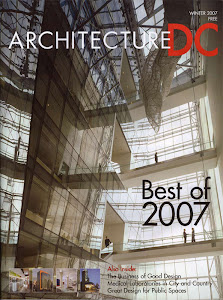
 The Sarasota School of Modernism plays a very important role in the significance of mid-century modern architecture. The area of central Florida still has many relics from this period. Drive-in motels with flashy pools and courtyards, automobile dealerships and showrooms, strip-malls (the first ones) and single family residences all themed for the age when people went "motoring" and sat poolside during their three martini lunches, turn up in most of these Floridian towns. Many have fallen into disrepair, but still retain some of that original glamour that they intended to evoke for the modern lifestyles of that age. Sarasota and the key islands that border it are no exception. Many of these mid-century residences are being restored to their original glory. The downtowns with the glitzy display cased storefronts are booming again with pedestrians. While these historic gems are having a revitalization, there is also a growing taste for today's modernist principles in design. New waterfront homes that are designed with the mid-century principles of open floorplans, simple materials, spaces that blur the lines between indoors and outdoors, and modest square footage are becoming more popular. One commercial space along the main drag through St. Armands Key, which is just beyond Sarasota, follows these new Floridian modern principles. Cork is a hot new winebar and lounge. The exterior storefront is a simple palate of glass, steel and stucco. The heavier masonry massing of the elevation gently wraps around the delicate glazing to create overhangs and balconies. The effect is a pulling of the passer-by into the spaces while encouraging the occupants to interact with the street scene. The entrance invites you into a very light-filled space with terrazzo surfaces and plenty of bright tropical colors which punctuate individual walls to create boundaries rather than enclosures to the spaces. The first floor is more of a cafe welcoming visitors in from the Florida heat during the day. Evening hours bring people up to the second level to engage in a more intimate and loungy atmosphere. A central open riser stair, transparent glass rails and countertops flank a orange tiled wall which connects the upper and the lower spaces. The lounge combines rich wood panels, dark leathers and fabrics with more luxe seating banquettes. The lighting here is through a series of clerestory windows and the light filtered through a mobile screen floating in the stairwell. Glass panels create a flow of this space to the exterior balcony space. Here the loungers can interact with the vibrancy of the evening street culture. These spaces combine the public of the street with the intimacy of the lounge as well as the old Florida lifestyle with the new.
The Sarasota School of Modernism plays a very important role in the significance of mid-century modern architecture. The area of central Florida still has many relics from this period. Drive-in motels with flashy pools and courtyards, automobile dealerships and showrooms, strip-malls (the first ones) and single family residences all themed for the age when people went "motoring" and sat poolside during their three martini lunches, turn up in most of these Floridian towns. Many have fallen into disrepair, but still retain some of that original glamour that they intended to evoke for the modern lifestyles of that age. Sarasota and the key islands that border it are no exception. Many of these mid-century residences are being restored to their original glory. The downtowns with the glitzy display cased storefronts are booming again with pedestrians. While these historic gems are having a revitalization, there is also a growing taste for today's modernist principles in design. New waterfront homes that are designed with the mid-century principles of open floorplans, simple materials, spaces that blur the lines between indoors and outdoors, and modest square footage are becoming more popular. One commercial space along the main drag through St. Armands Key, which is just beyond Sarasota, follows these new Floridian modern principles. Cork is a hot new winebar and lounge. The exterior storefront is a simple palate of glass, steel and stucco. The heavier masonry massing of the elevation gently wraps around the delicate glazing to create overhangs and balconies. The effect is a pulling of the passer-by into the spaces while encouraging the occupants to interact with the street scene. The entrance invites you into a very light-filled space with terrazzo surfaces and plenty of bright tropical colors which punctuate individual walls to create boundaries rather than enclosures to the spaces. The first floor is more of a cafe welcoming visitors in from the Florida heat during the day. Evening hours bring people up to the second level to engage in a more intimate and loungy atmosphere. A central open riser stair, transparent glass rails and countertops flank a orange tiled wall which connects the upper and the lower spaces. The lounge combines rich wood panels, dark leathers and fabrics with more luxe seating banquettes. The lighting here is through a series of clerestory windows and the light filtered through a mobile screen floating in the stairwell. Glass panels create a flow of this space to the exterior balcony space. Here the loungers can interact with the vibrancy of the evening street culture. These spaces combine the public of the street with the intimacy of the lounge as well as the old Florida lifestyle with the new.


Sunday, June 8, 2008
Travel Log : St. Armands Key, Florida
Subscribe to:
Post Comments (Atom)









No comments:
Post a Comment